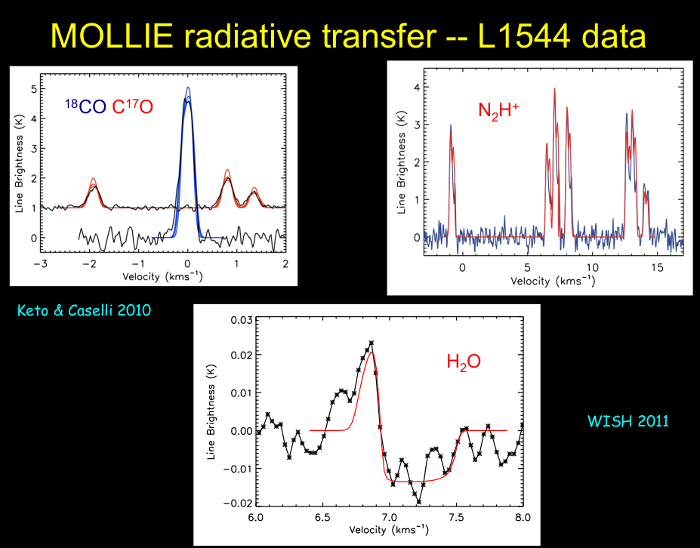
|
EPoS |
|
EPoS Contribution
|
|
Simplified oxygen-carbon chemistry in cold starless cores
Eric Keto Harvard-Smithsonian Center for Astrophysics, Cambridge, MA, USA | |
| Starless cores are the simplest molecular clouds. They contain no embedded stars, no internal shocks, and no other sources of heat. Their density structure is approximately hydrostatic described by the Lane-Emden equation. Their temperature is regulated by radiative equilibrium with external starlight and cosmic rays. Their internal velocities are subsonic, generally either slow contraction or long period oscillations. The certainty of their well-understood structure provides a solid framework to investigate other questions less understood, for example the chemistry governing the abundance of gas-phase molecules. Observations of CO, N2H+, and most recently Herschel observations of H2O provide the necessary data to test hypotheses and models. Using our radiative transfer code MOLLIE to simulate the molecular line observations produced by different chemical models we identify the significant chemical reactions. We find that photo-dissociation defines the boundaries of the cores. In the interior, the extreme cold renders gas-phase reactions insignificant, and the gas-phase abundances are controlled by gas-grain reactions. A simple model of 4 species is sufficient to describe the oxygen chemistry and a similar model the carbon chemistry. Our modeling further confirms the hypothesis of the cores as cold molecular clouds separated from the surrounding warm neutral medium by a photo-dissociation region. The neutral medium can provide a bounding pressure that does not contribute to the gravitational instability of the cores. This allows the cores to be relatively long-lived compared to their free-fall times, and their evolution controlled by the slow dissipation of their internal kinetic and magnetic energy. | |
 | |
| Caption: This figure shows simulations of molecular lines in L1544 using our simplified chemical models for the gas-phase abundances. | |
| Collaborators: Paola Caselli, Univ. Leeds, UK |
Key publication
|